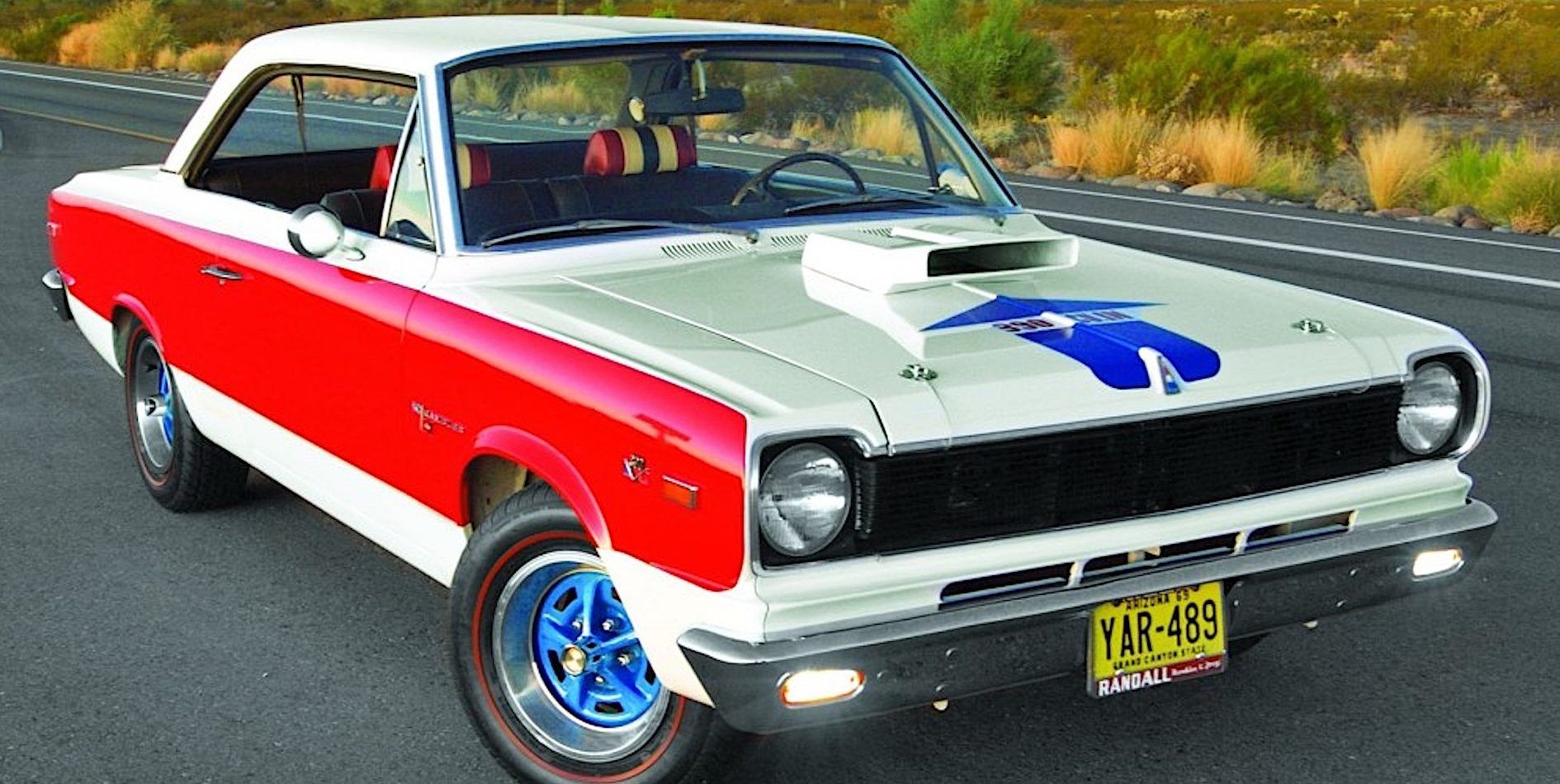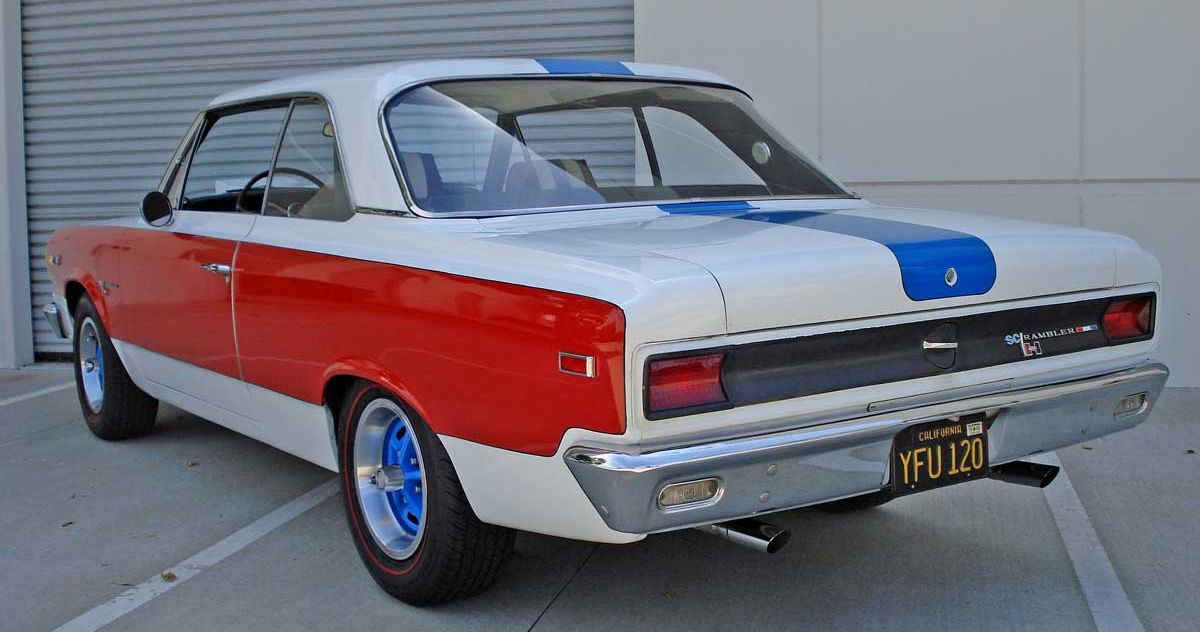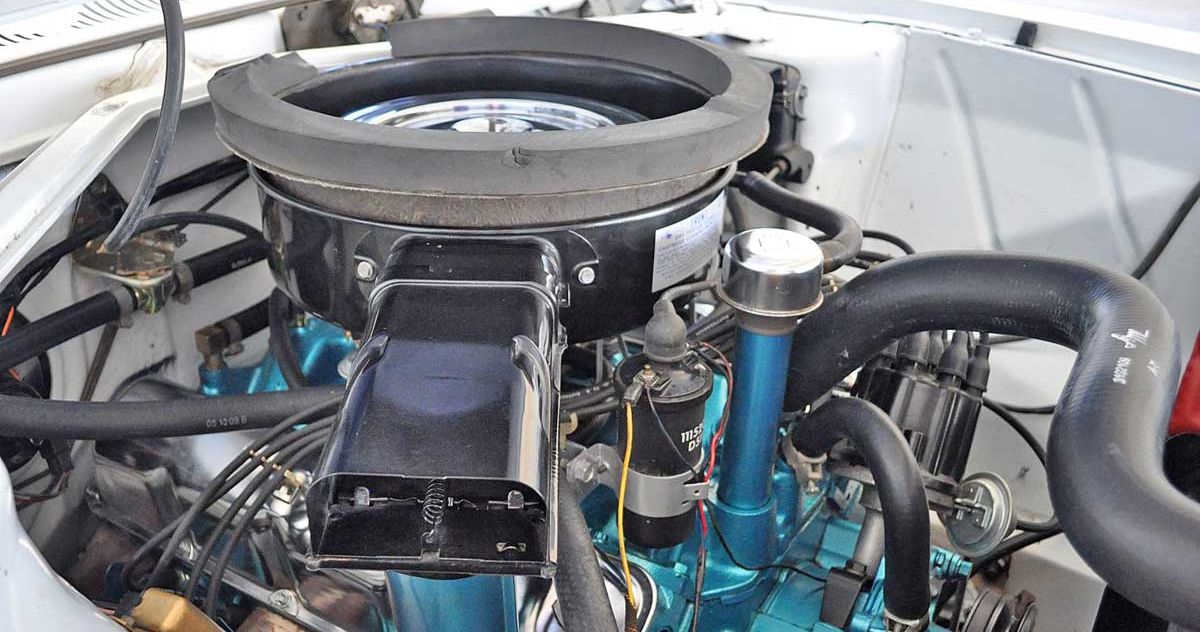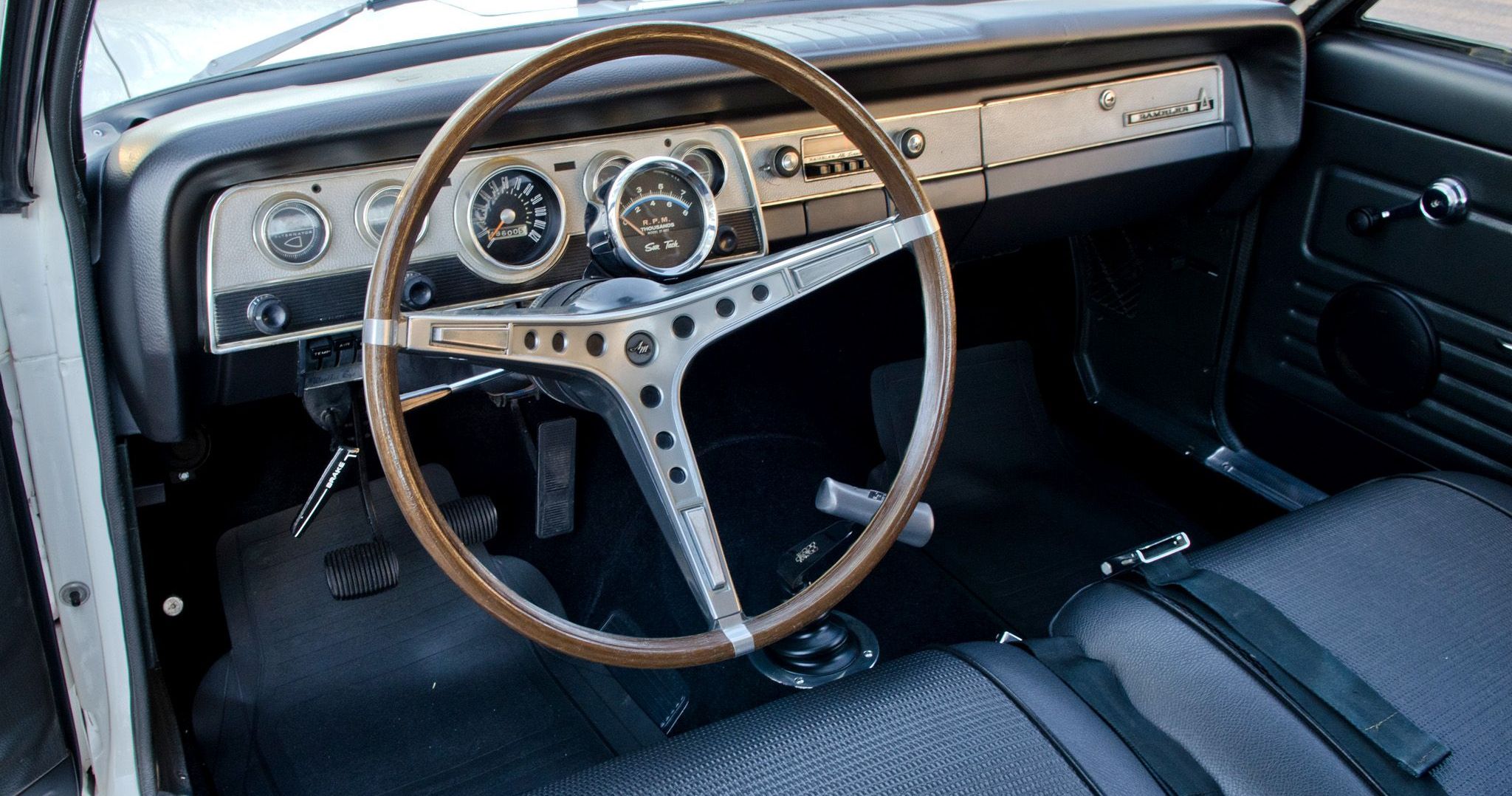Most of you reading this probably don't remember the American Motors Corporation or AMC as it was known. AMC was born in 1954 as a result of a merger between the Nash and Hudson Motor Car Companies. Known for their rather austere design sensibility and budget automobile offerings, they eventually were absorbed into the Chrysler Corporate Group in 1990.
During their heyday in the 1960's, however, they cranked out some very unique designs in the small-size space that offered attractive performance alternatives to competing Fords, Chevys, and Plymouths. And while I'll never tire of seeing a balled out Falcon, Box Nova, or Polara, it's nice to see something different every now and then.
In this case, something different is the 1969 AMC Hurst SC/Rambler. With a ground pounding 390 engine, 4-speed Hurst shifter, and a crazy graphics package that looks like it belongs on a Trump supporter's ride, it certainly stands out in the muscle car crowd. Let's take a look at Detroit's - er, I mean, Kenosha's - other muscle car and see what makes it so unique.
The Other Muscle Car
The 1969 AMC Hurst SC/Rambler was based on the compact Rambler, one of AMC's smaller budget grocery haulers. It was quite sedate and plain in its base form but AMC had a bunch of go-fast parts in its catalog and was quite involved in Trans Am and NHRA racing as well. To soup up the Rambler, they teamed with Hurst Performance and thus was born the Hurst SC/Rambler.
AMC sought to design a car that not only set it apart from the Big Three but performed equally or better than competitor's offerings. With a final price under $3,000 and a quarter mile time in the low 14 second range, she was the very definition of getting the most bang for your buck. And with only 1,500 some odd examples built they are quite desirable today.
Power To Back It Up
The Hurst SC/Rambler starts with a 315 hp, 390 cube V8 under the hood. It was a specially-prepared engine that AMC put in all of their top models and a version of it also saw duty in NHRA F/Stock class cars as well. The transmission was a 4-speed manual T-10 unit with, of course, a Hurst Quarter stick shifter with T-handle. The clutch was a 10.5" unit with a beefy pressure plate. The rear was a limited slip unit with Dana hardware and a 3.54 gearset.
The factory exhaust manifolds flowed exceptionally well for cast units and were routed into a true dual exhaust system with glasspacks routed out back. The Hurst SC also benefited from front disc brakes, staggered rear shocks, a beefed up chassis with targeted bracing, steel plates riveted to the trunk pan, rolled fender lips for larger rubber, and torque arms.
Bare Bones Racer
But the rest of the aesthetic both inside and out, with the exception of the crazy graphics and paint job, was as bare bones as cars of this era came. How else do you think they kept the price below $3,000 after all?!
The SC/Rambler was only available in a two door hardtop configuration with a gray vinyl interior and reclining seats that carried over the red, white and blue exterior theme on the headrests. The dash was identical to other Rambler models with a standard headliner. But she was fitted with a Sun tachometer as there was no dash integrated unit. The only factory option available was an AM radio! How's that for keeping costs under control!
Check It Out For Yourself
The end result was a car that in looks and performance bore no relation to the base Rambler, and thankfully so. It performed simply and quite fast on the strip and enabled even those on a budget to race with the big boys from Ford, Dodge, and Chevy. Check out the video above for a deep dive into the 1969 AMC Hurst SC/Rambler. It's worth a watch. Buckle up.
Sources: Mecum, Hemmings, How Stuff Works




